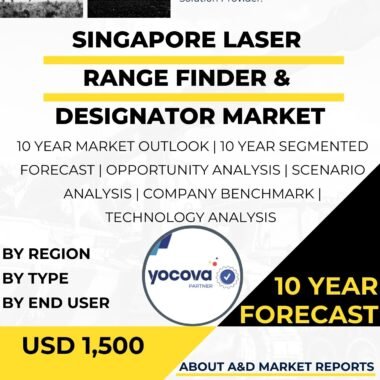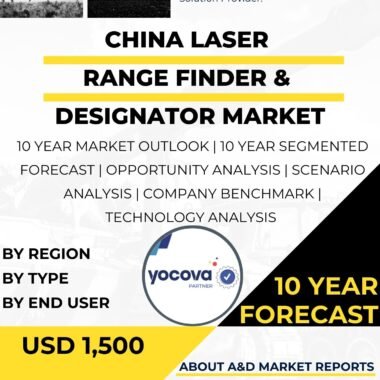Description
Magnesium demand in the aerospace and defense industry in Australia is shaped by the material’s unique properties, which make it highly suitable for applications requiring strength, lightweight characteristics, and thermal management. Magnesium is recognized as the lightest structural metal commercially available, with a density significantly lower than steel and aluminum, offering substantial weight reduction opportunities. This weight advantage is critical in aerospace and defense, where minimizing mass improves fuel efficiency, thrust-to-weight ratio, and overall performance. The industry?s pursuit of advanced materials that provide strength without added bulk drives the increasing use of magnesium alloys in various aerospace and defense components.
In aircraft manufacturing, magnesium alloys are favored for internal cabin fittings, structural parts, housing frames, and components where vibration damping and resistance to mechanical fatigue are essential. These alloys contribute to reducing the overall weight of aircraft, helicopters, and satellites, supporting advancements in both commercial aviation and defense technology. The growing complexity and sophistication of defense systems, such as drones, missile technology, and surveillance equipment, also benefit from magnesium’s machinability and thermal conductivity, which enhance system reliability and operational efficiency.
Australia’s significant magnesite resources give it a strategic advantage in the magnesium supply chain, supporting both upstream extraction and downstream processing. The availability of raw material locally helps maintain steady supply and price competitiveness in the market. Additionally, ongoing investments in extraction technologies, including innovations focused on sustainability and carbon-free manufacturing processes, are improving production efficiency and environmental impact. These advancements align with the broader government emphasis on environmental regulations and sustainable resource management, ensuring that magnesium production and utilization meet stringent ecological standards.
The aerospace and defense sectors demand magnesium products that not only meet lightweight and strength requirements but also exhibit durability under corrosive and high-stress environments. While magnesium itself is more reactive and susceptible to corrosion, industry players have addressed these challenges through alloying with rare-earth elements and applying protective coatings, enabling reliable use in demanding conditions. This progress has expanded magnesium’s acceptance in safety-critical applications, which was previously limited due to concerns over corrosion and fire risk during manufacturing processes.
Magnesium use in Australia?s aerospace and defense market is complemented by the growing global trend towards eco-friendly and sustainable materials. There is rising awareness among manufacturers about reducing carbon footprints and enhancing energy efficiency throughout the product lifecycle. Lightweight magnesium alloys contribute to this by enabling lower fuel consumption in aircraft and defense vehicles, directly supporting environmental goals. The market is further bolstered by active research and development initiatives focusing on advanced magnesium alloys, recycling technologies, and alternative production methods from industrial residues, which collectively drive innovation and long-term sustainability.
The commercial aerospace industry’s expansion, supported by increasing air travel and defense spending globally, also reflects in the Australian market’s demand dynamics. This momentum is sustained by the need for performance materials in new aircraft models, maintenance, repair, and overhaul activities, and modernization of defense fleets. As these industries evolve, magnesium continues to be a preferred choice due to its combination of light weight, strength, and versatility, fulfilling both regulatory requirements and market expectations.
Australia?s market landscape includes key players involved in magnesium metal production, alloy fabrication, and precision engineering. These companies focus on developing specialized magnesium products tailored to aerospace and defense needs, ranging from die casting applications to structural and electronic components. Partnerships and collaborations within the industry enhance technological capabilities and expand the reach of Australian magnesium products both domestically and for export.
Challenges remain such as competition from aluminum and other advanced composites, along with the high production cost of magnesium alloys. However, the drive for lightweight materials in aerospace and defense, combined with supportive government regulations and industry innovation, positions magnesium demand for steady growth. The balance of supply and demand is also influenced by the mineral resource base in Australia and technological advances that continually improve the material?s performance and cost-effectiveness.
In summary, the demand for magnesium in Australia’s aerospace and defense industry is propelled by its unparalleled lightweight advantage and strong mechanical properties. It supports critical applications in aircraft, helicopters, satellites, and defense systems where performance and efficiency are paramount. The robust local resource availability, coupled with investments in new technologies and sustainability initiatives, further underscores Australia’s potential as a competitive magnesium supplier in the global aerospace and defense supply chain. This evolving market reflects broader trends of material innovation and environmental consciousness, making magnesium a cornerstone material in the future of aerospace and defense manufacturing in the region.




